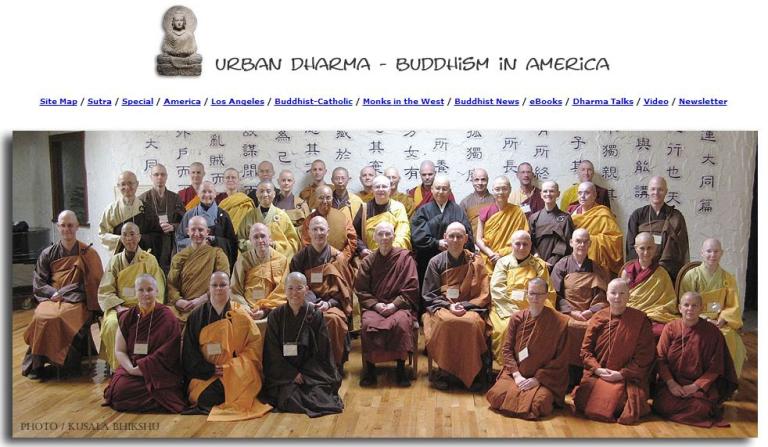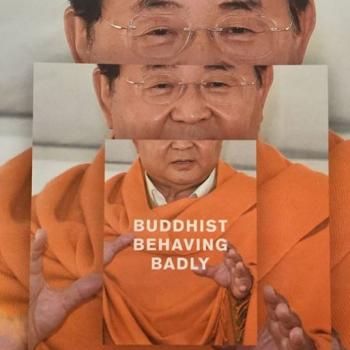
The Huffington Post has a great discussion posted online late last week on the topic of religion in the US today (click the link for video). And all this week NPR has hosted a discussion of the topic, “losing our religion.”
Lacking, however, was a Buddhist (or Hindu or Jain) voice.
What does the rise of the ‘nones’ mean to American Buddhists?
As American Buddhists are very diverse, ranging from Asian “cradle” Buddhists who may be 2nd, 5th, 9th generation or otherwise to Asian “converts”; European “cradle” Buddhists, generally restricted to 2nd or perhaps 3rd generation Buddhists; European converts, as well as Black, Latino/a and (extremely rare) Native American converts – and others. Beyond the racial or ethnic groupings there are other ways of seeing American Buddhists: the curious, the committed newbies, the orientalists (those who think that since it comes from Asia it must be pure in a way that European traditions no longer are), the scholar-practitioners, the burn-outs, the secularists, and others.
While drawing different sets of distinctions is helpful, it’s also useful to talk about what they share in common as people in America (or “the West”) in the 21st century: access to varying traditions (Buddhist and non-Buddhist), access to fellow practitioners around the globe, distractions due to so much access, relative wealth and political stability, advanced technology, and so on.
Despite recent internet search trends, Buddhism as a practiced religion is still on the rise in the US as far as I know (determining this for sure is rife with difficulties). But, assuming that to be true, it is worth asking why Buddhism is growing at a time when mainstream Christianity is shrinking. Part of the answer can come in the “packaging” of Buddhism as a religion for our age: pro-science, psychologically astute, egalitarian, and so on. But Christians and others can package themselves in just this way. Perhaps there is a flexibility in Buddhism, as the “newcomer” to the West, that Christianity is lacking. How many of us read with excitement the following: “The Pope has tweeted for the first time in Latin, a language Vatican officials claim is the perfect tongue to tweet in.” (telegraph.co.uk)
Meanwhile, on the other side of the world is this: “Mind and Life XXVI: Mind, Brain and Matter – Critical Conversations Between Buddhist Thought and Science.” Both religious leaders are engaging with modernity, but obviously in very different ways.
An obvious question is: is this flexibility inherent to Buddhism, or is it just a survival technique that will fade as (if) Buddhism becomes more dominant in the West? A quick survey of the history of Buddhism in various Asian contexts suggests the latter. While “Buddhist Modernism” presents a very visible face of Buddhism today, traditional tendencies and undercurrents are still common in every tradition. Of course, what makes Buddhism “Buddhism” is this very appeal to and connection with a historical past – a past that includes many things that modernists would like to ignore or cut away. Yet how much trimming can be done before the “bodhi tree” is no longer recognizable? Such questions go beyond the simpler task of this post: to question how American Buddhists see the rise of the “nones.”
My own guess is that the “nones” will actually provide a large(r) pool of potential Buddhists in the years to come. The movement will, no doubt, gain some numbers from Buddhist communities, but the general drift will be in the opposite direction. Buddhism in many (most?) forms in the West requires little in the way of faith (some degree of belief in karma may be expected, but I’ve never witnessed a ‘hard sell’ on this or other tenants of Buddhist doctrine) or commitment. It’s easy to drift in and, given the basic benefits of simply enjoying community and meditation or chanting, it’s easy to gain some sense of benefit. As one gets “deeper” into it, one will likely get more of a sense of the “demands” of Buddhism: that one really needs to develop generosity and other basics of ethics, for instance, and that if one wants the kind of mental clarity promised in the traditions, one really needs to meditate regularly and perhaps even spend extended periods of time on retreat, and perhaps dealing with the effects of a direct experience of impermanence, non-self, and/or (the pervasive nature of ) dissatisfactoriness.
In any case, immigration (from already predominantly Buddhist countries) will play one important role in the future growth of Buddhism in America. Another key factor, however, will be cultural shifts. The last big shift: that of the late ’60s and early ’70s was a key turning point for Buddhism in the West. Are we in the midst of another similar era?











